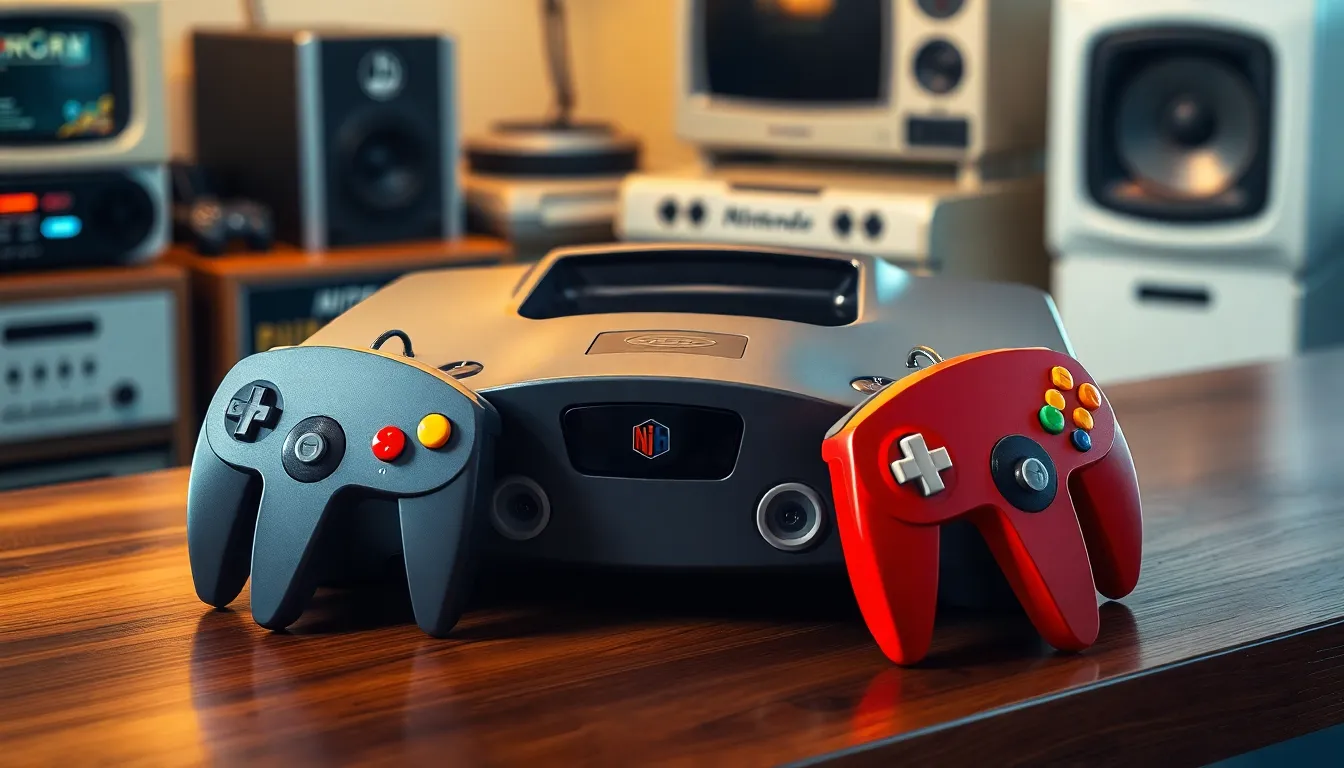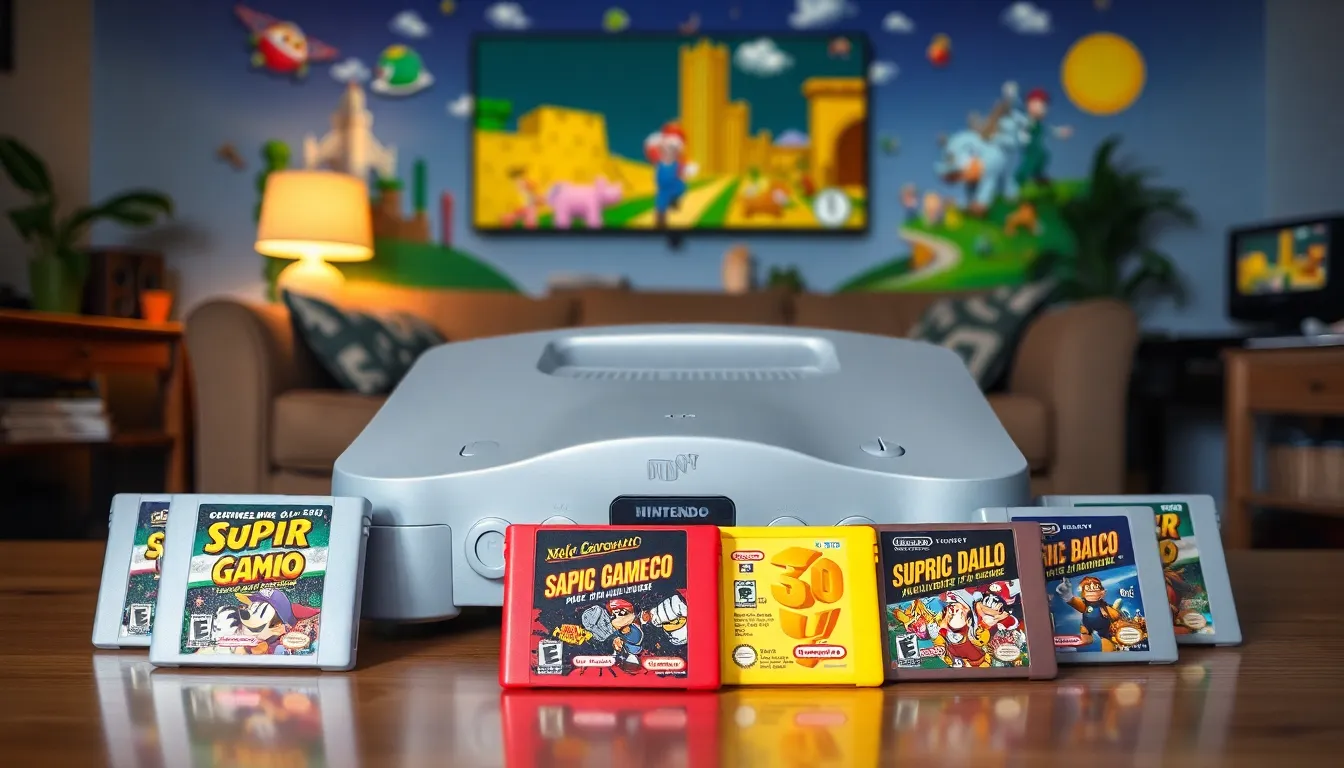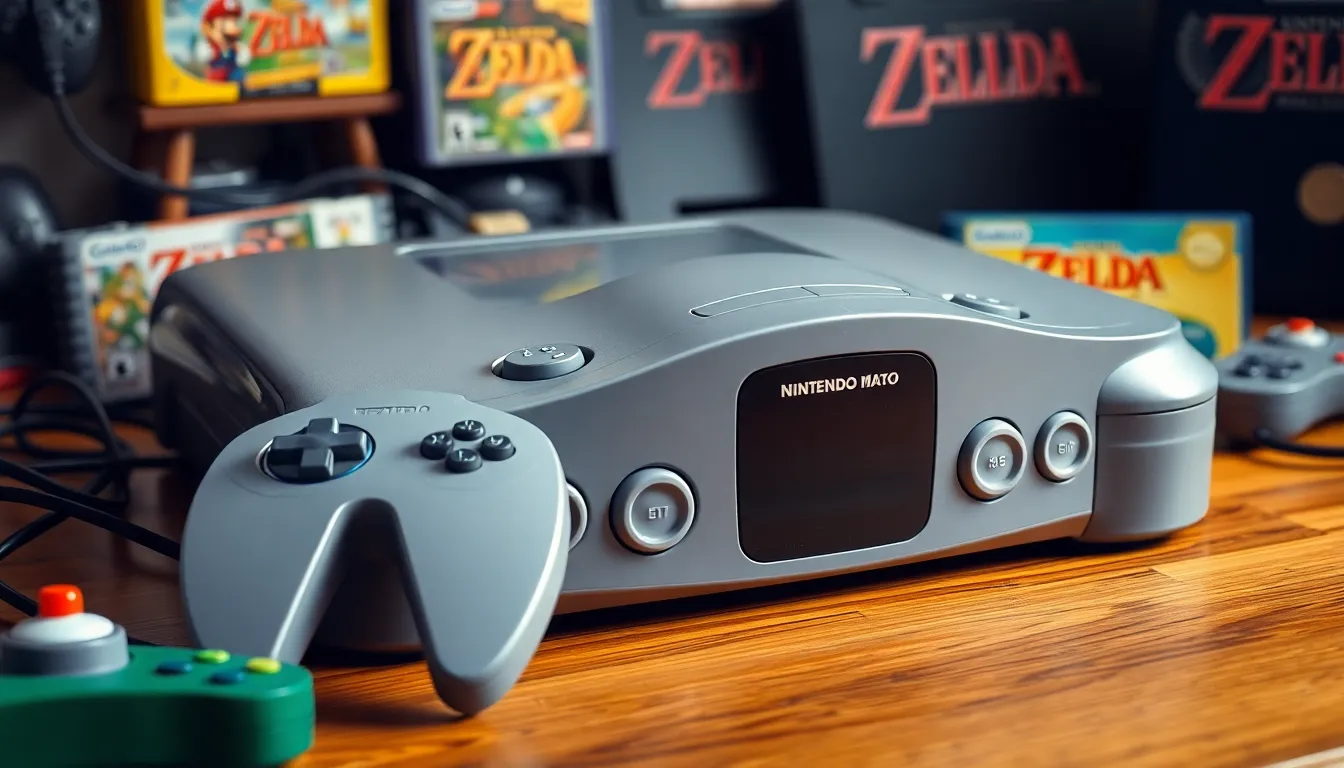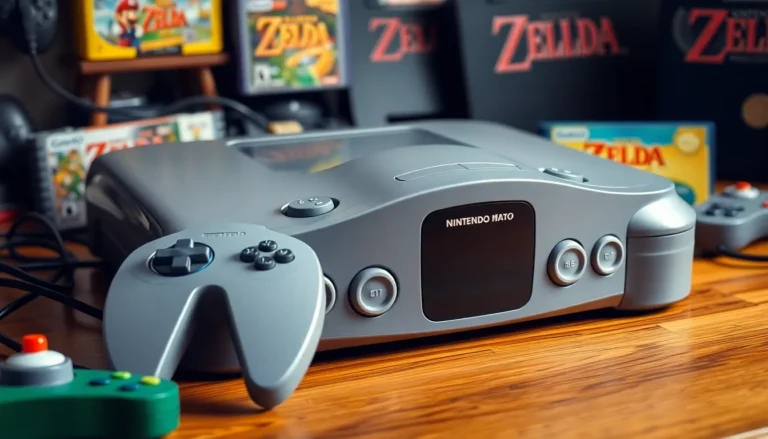The Nintendo 64 marked a revolutionary shift in the gaming world when it hit the market. Launched in the mid-90s, this iconic console introduced players to 3D graphics and immersive gameplay, setting the stage for future gaming innovations. With its unique controller design and a library of unforgettable titles, it quickly became a beloved staple in households around the globe.
Understanding the timeline of the Nintendo 64’s release not only highlights its impact on gaming history but also showcases the evolution of video game technology. As we delve into the specifics of its launch, we uncover the factors that contributed to its success and lasting legacy in the hearts of gamers.
Table of Contents
ToggleOverview of the Nintendo 64
Nintendo 64 emerged as a groundbreaking console in the gaming landscape. Launched on June 23, 1996, in Japan, it introduced gamers to the world of 3D graphics. The North American release followed on September 29, 1996, and Europe saw it on March 1, 1997. The console’s release marked a significant technological leap, distinguishing itself from its 16-bit predecessors.
The Nintendo 64 featured a distinctive controller that included an analog joystick, allowing for more precise control. Players experienced a wide array of titles such as Super Mario 64, The Legend of Zelda: Ocarina of Time, and Mario Kart 64. These games showcased the console’s capabilities and created a lasting impact on the action-adventure and racing genres.
Nintendo 64 utilized cartridge media, ensuring reduced loading times compared to CD-based systems. This choice facilitated fast-paced gameplay, enhancing player engagement. The platform supported up to four players simultaneously, making it a favored choice for multiplayer sessions.
The console’s unique design and innovative technology contributed significantly to its commercial success. Approximately 32.93 million units sold worldwide, establishing the Nintendo 64 as a beloved console among gamers. The legacy of the Nintendo 64 continues to influence game design and development, exemplifying its role as a pioneer in the gaming industry.
Release Date and Timeline


The release timeline of the Nintendo 64 marked a significant period in gaming history, showcasing its introduction to the market across different regions.
Initial Announcement
The Nintendo 64 was initially announced in 1995, generating excitement among gamers and industry professionals. Known as Project Reality during its development phase, this console focused on incorporating advanced 3D graphics and innovative gameplay mechanics. Nintendo unveiled the official name during the 1996 Electronic Entertainment Expo (E3), capturing attention and anticipation for its upcoming release.
Worldwide Release Dates
| Region | Release Date |
|---|---|
| Japan | June 23, 1996 |
| North America | September 29, 1996 |
| Europe | March 1, 1997 |
The Nintendo 64 launched in Japan on June 23, 1996, followed by a North American release on September 29, 1996. The European market received the console later, with a debut on March 1, 1997. Each rollout contributed to the console’s growing popularity, reinforcing its position in the competitive gaming landscape of the late 1990s.
Impact on Gaming Industry
The Nintendo 64 significantly influenced the gaming industry, marking a shift towards more immersive and engaging gameplay experiences. Its advancements prompted changes in game design and technology, setting new standards for future consoles.
Innovations Introduced
- 3D Graphics: The Nintendo 64 established 3D polygons as the standard, enabling developers to create rich, detailed environments and characters, enhancing visual fidelity.
- Analog Joystick: The introduction of the analog joystick allowed for precise movements, giving players unprecedented control over their in-game characters and actions.
- Cartridge Media: Utilizing cartridge technology reduced loading times significantly, offering a seamless gaming experience compared to disc-based systems, which often faced delays.
- Multiplayer Capability: Supporting up to four players simultaneously assisted in cultivating a social gaming atmosphere, popularizing multiplayer gaming as a core experience.
Comparison with Other Consoles
- PlayStation: While the Sony PlayStation focused on CD-ROM technology, offering larger storage capacity, the Nintendo 64 provided quicker load times through cartridges, impacting game fluidity and pacing.
- Sega Saturn: The Sega Saturn, released earlier, struggled to compete due to its less effective 3D processing capabilities, highlighting the Nintendo 64’s advancements in graphics technology.
- GameCube: The Nintendo 64’s innovations laid the foundation for its successor, the GameCube, which continued to build on 3D graphics and introduced optical disc media, showcasing the evolution of gaming technology driven by earlier consoles.
Legacy of the Nintendo 64
The Nintendo 64 significantly shaped the gaming landscape, inspiring future consoles and establishing a devoted fan base. Its innovative features and memorable games ensured its influence lasted well beyond its lifespan.
Influence on Future Consoles
The Nintendo 64’s advancements established a precedent for future gaming systems. It introduced 3D polygons and refined analog control, which became standards in console design. Features like multiplayer support encouraged subsequent consoles to prioritize social gaming experiences. The controller design and layout paved the way for innovations in ergonomics, influencing the design of controllers for future generations, including the GameCube and Wii. The Nintendo 64 also propelled game developers towards more complex environments and storytelling, affecting game design for the PlayStation 2, Xbox, and beyond.
Fan Base and Collectibility
The Nintendo 64 cultivated a loyal fan base that remains active today. Iconic titles like Super Mario 64 and The Legend of Zelda: Ocarina of Time generated a strong community of players and collectors. Many fans seek original consoles and games, leading to a robust market for collectibles. With over 32 million units sold, the console retains high value in collectors’ circles, especially rare titles and limited edition peripherals. Nostalgia and fond memories drive continued interest in the Nintendo 64, ensuring its legacy persists through remakes and retro gaming events.







